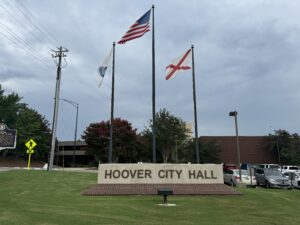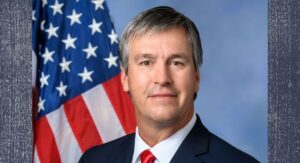Supporters, opponents address proposed new beach bridge in Baldwin County
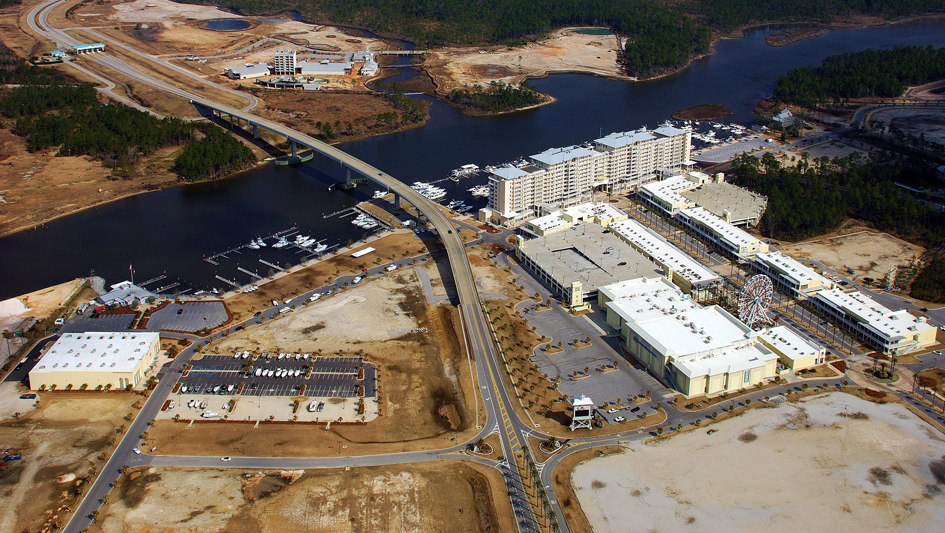
Transportation officials in Alabama have gotten plenty of opinions, pro and con, to consider on a proposed bridge to improve access to the state’s beaches. The department of transportation heard from 28 people in Gulf Shores on two proposals for a road and bridge project that’s expected to cost between $56 million and $61 million, news outlets reported. City leaders in Gulf Shores and Orange Beach also testified in favor of the project, saying it would help evacuate the beaches during hurricanes. “You cannot get on or off the island during any kind of catastrophic event,” said Orange Beach City Councilman Jerry Johnson. Gulf Shores public works director Mark Ackerman pointed out one of the existing bridges was closed for more than a day because of a barge collision in 2014. Thursday’s hearing comes just weeks after Hurricane Michael slammed ashore on the nearby Florida’s Panhandle as a Category 4 storm killing 45 people. The Alabama DOT is accepting public comments for the rest of the month. It plans to decide on a plan early next year. “We want to improve community connectivity, said Vincent Calametti, Southwest Region Engineer for the transportation department. Supporters say a new bridge would improve congestion that clogs roads heading to the beach during peak travel months. More than 6 million people visit the state’s beaches each year. Opponents say it’s a waste of money and should not be a top priority for transportation funds. They say the project might not get tourists to and from the beaches any faster, calling it a “Bridge2Nowhere.” Other opponents say the Mobile area has more important needs, including the widening of U.S. 98. Some residents living near the proposed bridge site are worried about noise and the appearance in the neighborhood. Republished with permission from the Associated Press.
Jim Zeigler vows to continue to request information from ALDOT on Baldwin County bridge project
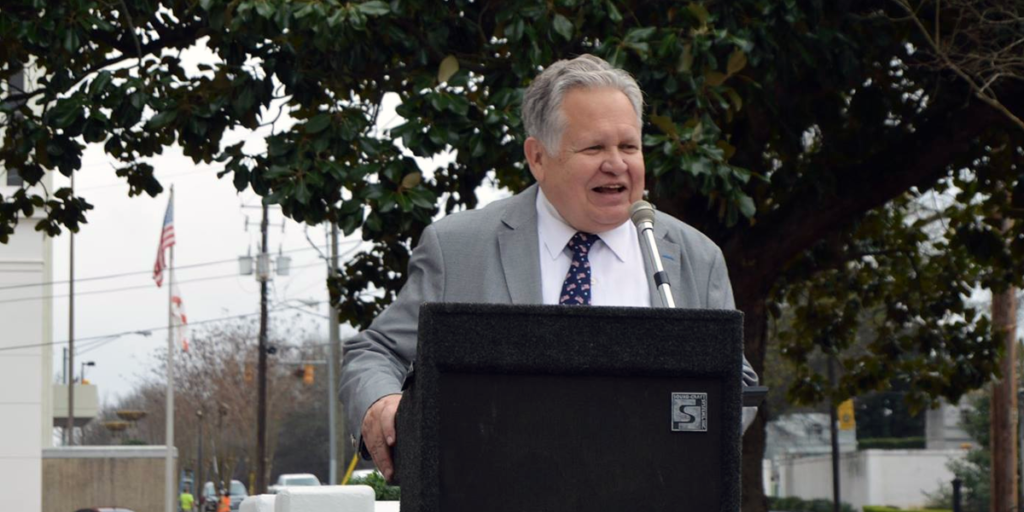
Alabama State Auditor Jim Zeigler is back at it — trying yet again to get answers from the evasive Alabama Department of Transportation (ALDOT) on the proposed Baldwin County bridge project. ALDOT has managed to side-step Zeigler’s requests for over well over six months, and thus, for the third time, Zeigler is asking for further information about an $87 million state-funded bridge project in Baldwin County. But rather than sending a letter and waiting patiently, this time Zeigler is going to make the appeal in person at Thursday night’s scheduled hearing on the proposed new ALDOT bridge over the Intercoastal Waterway. ALDOT announced the first project-specific public hearing last month. They are scheduled to make a “brief presentation” around 5:45 p.m. and then open the hearing to public comments. Speakers will have two minutes to make statements. Zeigler said two minutes is “not-near long enough” to ask his questions, so he will present them as written comments, an option that is allowed. History of Zeigler’s unanswered questions It all began in April, when Zeigler made a request for public documents. At the time, he requested the following documents from the ALDOT: Copies of any and all studies that demonstrated a need for a bridge over the Intercoastal waterway Any and all documents that show a change in the need for the Intercoastal bridge since the determination in 2016 that the bridge was unnecessary Any and all analyses to support spending $30-$87 million in state funds in light of the pressing infrastructure needs throughout the state Any and all documents that resulted in the range of costs projected ($30 to $87 million) Documents that show cost overruns on current and recent ALDOT projects According to the court filing from the bridge company, they agreed to widen their bridge at no additional cost to Please provide any and all documents that address why the option of widening the original bridge is not being utilized. But after three months, the State Auditor, who filed the request as an everyday Alabama citizen, had not received any update from the ALDOT, so he filed a second follow-up request July 12, 2018 giving ALDOT’s Cooper and Patty a deadline to respond: August 17. Now, nearly three months after that deadline Zeigler has yet to hear anything back from the ALDOT. So Zeigler will try yet again on Thursday where he expects to get a response “because they are required to respond.” “We have to take the comments and will sort through them and summarize and we have to respond to them,” said Brian Aaron, assistant region engineer for ALDOT’s Southeast Region, which includes Gulf Shores and Orange Beach. Zeigler is again requesting the following documents from the ALDOT: Copies of any and all studies that demonstrated a need for a bridge over the Intercoastal waterway. Any and all documents that show a change in the need for the Intercoastal bridge since the determination in 2016 that the bridge was unnecessary. Any and all analyses to support spending $30-$87 million in state funds in light of the pressing infrastructure needs throughout the state. Any and all documents that resulted in the range of costs projected ($30 to $87 million). Documents that show cost overruns on current and recent ALDOT projects. According to the court filing from the bridge company, they agreed to widen their bridge at no additional cost to Please provide any and all documents that address why the option of widening the original bridge is not being utilized. “I have more questions than answers about the proposed additional bridge,” Zeigler said in April. “I hope to solve that with my specific requests for public records. With other pressing needs for infrastructure improvements, we need to make sure that this $30 to $87 million-dollar project is the best use of our limited funds.” Project construction is expected to begin next summer, and last for two to three years. The state expects to finish the environmental permitting process by spring of 2019, and the public meeting is a requirement during this stage.
Amid continued lack of answers from ALDOT, residents request records from Army Corps for Baldwin County bridge
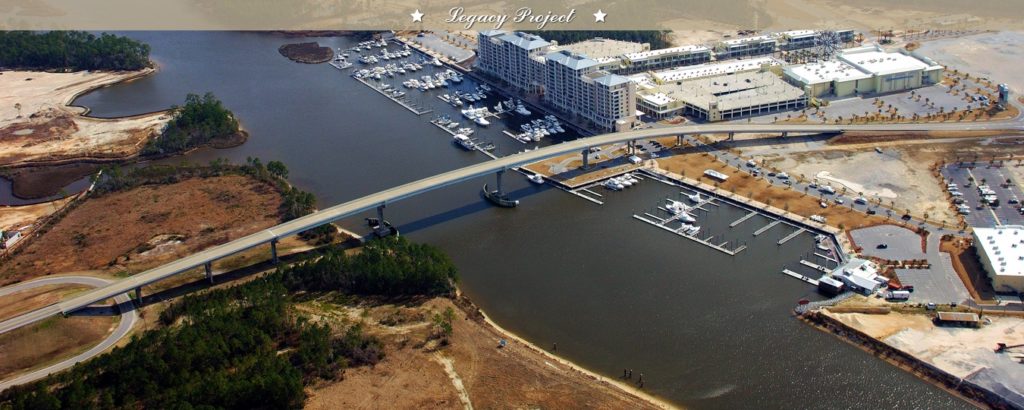
Having grown tired of waiting for the Alabama Department of Transportation (ALDOT) to give them answers about a proposed new bridge in Baldwin County, a group of locals have taken matters into their own hands on their quest for more information. On Thursday, 6 local residents sent the U.S. Army Corps of Engineers (USACE) Mobile District office a Freedom of Information Act (FOIA) request to “obtain access and review the permit application and records and studies, and comments, and other correspondence and documents in the file: SAM-206-00913-LET (The new permit application for the ICW bridge and road project).” According to the FOIA document, the signers “are making this request on behalf of residents, property owners, homeowners, tourists, a citizens’ group specifically formed based on interest in the project, and others including local public officials who correspond with residents and citizens through a Facebook page.“ At issue is a $87 million state-funded, competing bridge to the Foley Beach Express — a proposed connector from SR-180 to Foley Beach Express Bridge over the Intracoastal Waterway that will run between Orange Beach and Gulf Shores, Ala. Opponents of the bridge insist it is a waste of taxpayer funds that will be diverting much-needed state resources away from other critical state infrastructure projects while not addressing the true transportation and infrastructure needs of the community while proponents say they’re tired of paying tolls and believe the new bridge will solve traffic problems. Last week news broke that ALDOT has scheduled the first project-specific public hearing for the bridge on Nov. 15. ALDOT has invited anyone in the Southwest Region (Mobile area) interested in the new bridge to the hearing at the Gulf Shores Activity Center. There, they will get a chance to ask questions, make comments, and may review project information and exhibits on display. But some local residents don’t have much faith in what they consider the long-overdue ALDOT hearing, which is why they’ve turned to the USACE FOIA. “Myself and many other members of the Gulf Shores and Orange Beach community feel it is necessary to be allowed access to the permit plans, records and studies associated with the ICW bridge project,” said Joe Emerson, the founder of the Facebook group dedicated to stopping what he dubbed “End The #Bridge2Nowhere. “Multiple requests were made by the public to the USACE in May of this year asking for a public hearing about the LET request and we haven’t even been granted as much as an answer.” Emerson continued, “The state and local officials that are endorsing this project would have the taxpayers believe that this project is good for local and state interests when in fact in is quite to the contrary. If the project is so beneficial, then why can we not be granted access to public information about this project in a timely manner?” The FOIA requestors are asking that the fees be waived for their request as “the project is being funded with our tax dollars, and because this is public information.” “When the State Auditor, journalists and the tax-paying public are denied timely access to public information surrounding the ICW Bridge and Roadway project, there are few assumptions to be made besides the one suggesting there are faults and problems with the plans at their core,” Emerson concluded. Read the USACE FOIA request below:
Baldwin County Senate candidate Jason Fisher says ‘wait’ on Bridge to Nowhere
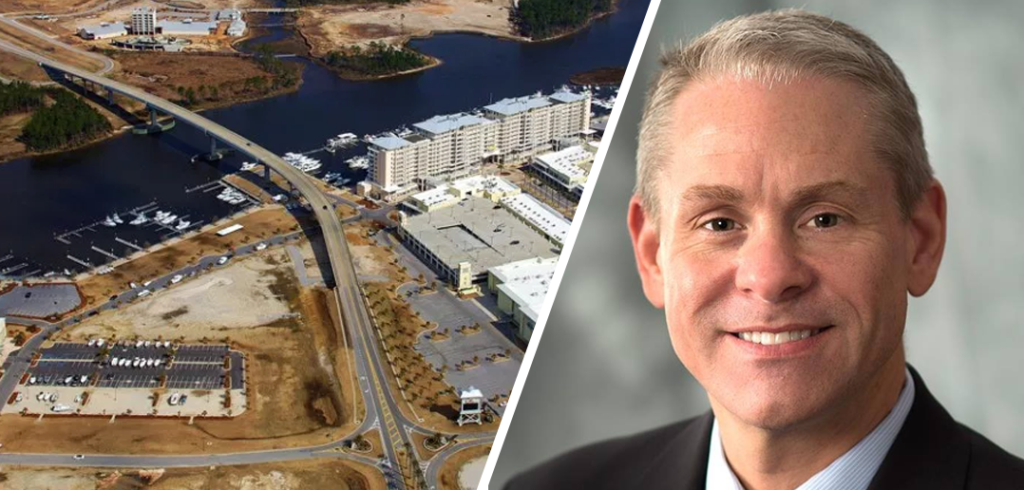
Questions over a proposed new bridge to the beach continue in Baldwin County. The debate has pitted local residents and taxpayer advocates from around the state against Alabama Department of Transportation’s Secretary John Cooper and several local mayors. At issue is a $87 million state-funded, competing bridge to the Foley Beach Express with opponents insisting it is a waste of taxpayer funds that will be diverting much-needed state resources away from other critical state infrastructure projects while not addressing the true transportation and infrastructure needs of the community while proponents say they’re tired of paying tolls and believe the new bridge will solve traffic problems. Orange Beach Mayor Tony Kennon says there is a pressing need for the bridge — “We have to be able to move traffic, we’ve got to be able to evacuate and we have to be able to grow,” Kennon told AL.com. “One bridge with a toll does not help us do that.” — others believe people are being misled to think the bridge is a necessary solution to the traffic congestion. Democrat Jason Fisher, a longtime resident of the Gulf Coast of Alabama State Senate candidate for District 32, says he understands the need for a bridge, but he too has concerns over the bridge plan. In a statement provided to Joe Emerson, the founder of the Facebook group dedicated to stopping what he dubbed “End The #Bridge2Nowhere“, one of the projects leading local opponents, a Fisher campaign volunteer responded to a request for Fisher’s position on the bridge by saying, “Jason understands the need for a third bridge, but has concerns that the current plan has not been thoroughly vetted from a cost and environmental standpoint. He is in favor of further studies before moving the project further.” Fisher further explained his position to Alabama Today in a statement: “The main issue I have is that the project was approved by the Governor’s administration without a full cost scope and impact analysis,” said Fisher. “I live in Orange Beach and am fully aware of the heavy traffic. Our infrastructure on the island is inadequate compared to the amount of people and traffic during peak tourist seasons. A third bridge may indeed be necessary. However, based on the reporting I have read, no controlled studies were ever completed by government officials. I cannot support a project, necessary as it may be, that is not fully scoped and vetted before a price tag of $87 million is approved.” Fisher’s concerns echo those of State Auditor Jim Zeigler who has posed questions on the cost and necessity of the bridge for months. It is unclear what the status of the bridge is as of early September a spokesman for ALDOT said that they were not releasing information because of a pending lawsuit related to the bridge. We have asked for additional information on that lawsuit and will update our readers when we are able to provide more details.
Fairhope election over a new form of government rescheduled for Nov. 6
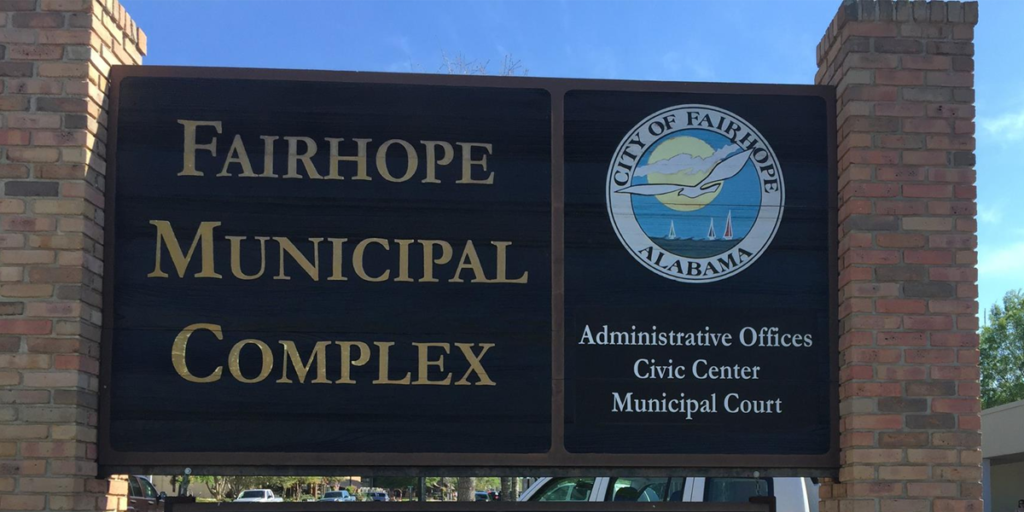
Residents of the City of Fairhope, Ala. were poised to head to the polls October 2 to vote in a special election to decide whether or not they will change the city’s form of government, but now they’ll be making the decision on Nov.6, in conjunction with the state’s general election, instead. The change was made less than a week before original voting day, according to a press release from Baldwin County Probate Judge Tim Russell. Fairhope voters will now wait to decide whether or not they believe the city should switch from its long-running Mayor-Council form to a Council-Manager system. Under the Council-Manager system, a new governing body known as the “Council of the City of Fairhope,” would have the same executive powers and duties of the council, and the mayor would become a member of the council. Meaning the mayor would no longer preside over all city employees, or the council. Instead the mayor would be in charge of ceremonial events, and serve as a representative of the city. Mayor Karin Wilson said told Lagniappe Mobile she is disappointed in the change of date. “I am disappointed… citizens took the extraordinary step to go door-to-door gaining signatures, as required by law, to have a voice in the future of their city. The referendum election date was noticed and advertised and now, a few days before the election, suddenly extended to the general election,” said Wilson. “What is further concerning is how this delay came about, first in a special-called meeting by council to research the election and at the eleventh hour the city attorney, without my knowledge, contacted the probate judge. Per usual, I was the last to know.”
These 50 Alabama schools top the state in reading success, earn share of $1 million

Reading is a gateway to future success — in school and in life. It is critical to start early if children are to develop the skills they need to be successful. Which is part of the reason why the Alabama State Department of Education (ALSDE) is rewarding the top 50 Alabama schools who showed the most improvement in last year’s 3rd grade reading results money totaling a million dollars. Alabama lawmakers added an additional $1 million to the Alabama Reading Initiative (ARI) budget during the 2018 Legislative Session to be divided evenly among each school selected will receive a $20,000 check as a way of recognizing and incentivizing teachers and students who have worked hard to achieve proficiency in reading. “Reading is the cornerstone to all other learning. When we make sure our students can read and comprehend what they are reading at an early age, we prepare them for a greater possibility of academic success throughout their lives,” State Superintendent of Education, Dr. Eric Mackey previously said about the initiative. There will be a special recognition and awards ceremony on Thursday, September 13 at the ALSDE after the September Alabama State Board of Education meeting. Governor Kay Ivey, Alabama legislators, and other dignitaries will be on hand to personally congratulate all 50 schools. Below are the award recipients: State School Board District 1: Fairhope Elementary School-Baldwin County Silverhill School – Baldwin County Spanish Fort Elementary School – Baldwin County Swift Elementary School – Baldwin County Pleasant Home School – Covington County WS Harlan Elementary School – Covington County Eichold-Mertz School of Math and Science – Mobile County State School Board District 2: Cleburne County Elementary School – Cleburne County Kinston School – Coffee County Highlands Elementary School – Dothan City Geneva County Elementary School – Geneva County Samson Elementary School – Geneva County Slocomb Elementary School – Geneva County Abbeville Elementary School – Henry County Wedowee Elementary School – Randolph County State School Board District 3: Clanton Intermediate School – Chilton County Bluff Park Elementary School- Hoover City Deer Valley Elementary School – Hoover City Greystone Elementary School – Hoover City Mountain Brook Elementary School – Mountain Brook City Pelham Oaks Elementary School – Pelham City Mt. Laurel Elementary School – Shelby County State School Board District 4: Phillips Academy – Birmingham City State School Board District 5: Billingsley High School – Autauga County Pine Level Elementary School – Autauga County Southern Choctaw Elementary School – Choctaw County Sweet Water High School – Marengo County State School Board District 6: Randolph Park Elementary School – Anniston City Appalachian School – Blount County Cold Springs Elementary School – Cullman County Parkside Elementary School – Cullman County Chestnut Grove Elementary School – Decatur City F.E. Burleson Elementary School – Hartselle City Springville Elementary School – St. Clair County State School Board District 7: Hatton Elementary School – Colbert County Leighton Elementary School – Colbert County Berry Elementary School – Fayette County Mount Olive Elementary School – Jefferson County South Lamar School – Lamar County Central High School – Lauderdale County Underwood Elementary School – Lauderdale County Crestline Elementary School – Mountain Brook City Cahaba Elementary School – Trussville City Tuscaloosa Magnet School – Elementary – Tuscaloosa City Verner Elementary School – Tuscaloosa City State School Board District 8: Attalla Elementary School – Attalla City Fyffe High School – DeKalb County Henagar Junior High School – DeKalb County Sylvania School – DeKalb County Thurston T Nelson Elementary School – Scottsboro City
Bradley Byrne confirms illegal immigrants will not be housed in Baldwin County
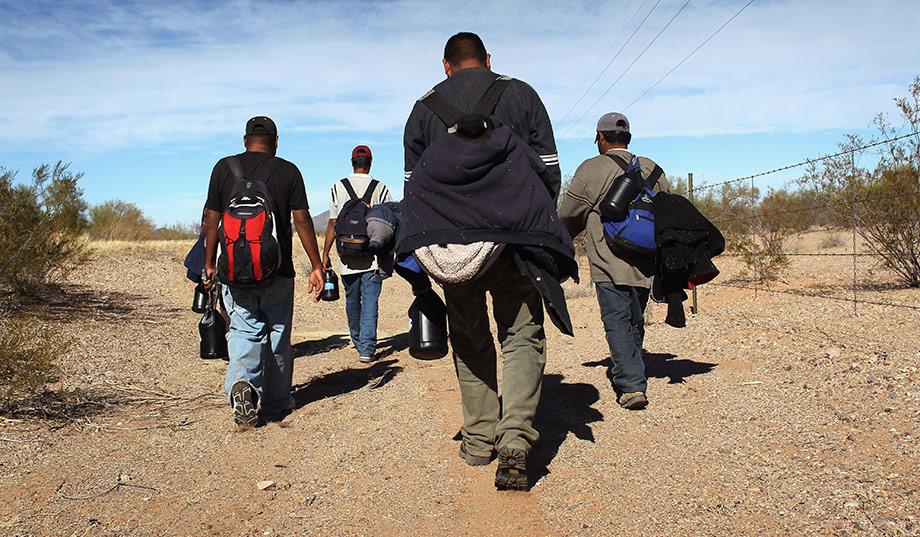
Alabama 1st District U.S. Rep. Bradley Byrne on Tuesday tweeted there are no plans to house immigrants at the Navy airfields in south Baldwin County. “BREAKING: My office has learned that there are no plans to house illegal immigrants at Navy airfields in south Baldwin County! This was a bad idea from the start, and I am pleased it will not come to fruition,” Byrne tweeted upon receiving confirmation from the Department of Homeland Security (DHS) and Immigration and Customs Enforcement (ICE). BREAKING: My office has learned that there are no plans to house illegal immigrants at Navy airfields in south Baldwin County! This was a bad idea from the start, and I am pleased it will not come to fruition. — Rep. Bradley Byrne (@RepByrne) August 14, 2018 “Housing illegal immigrants at ill-equipped airfields along the Gulf Coast was always a terrible idea, so I appreciate the confirmation that this plan is no longer being considered,” Byrne said in a statement following his tweet. “We had a team effort to push back this flawed idea, and I especially want to thank Baldwin County Commissioners Chris Elliott and Tucker Dorsey and Baldwin County Sheriff Hoss Mack for their advocacy on this issue.” Byne continued, While I am glad this issue is resolved, we must continue working to secure the border and eliminate the need for additional housing for illegal immigrants altogether. I remain 100% committed to working with President Trump to build a border wall, hire additional border patrol officers, and ensure our border security is as strong as possible.” Byrne led an effort in Washington in June to express opposition to housing up to 10,000 illegal immigrants at Naval Outlying Field Silverhill and Naval Outlying Field Wolf in south Baldwin County. He joined other members of the Alabama and Florida Congressional delegations in sending a letter to Secretary of Defense James Mattis and Secretary of Homeland Security Kirstjen Nielson outlining concerns with the proposal. Byrne also hosted Baldwin County officials in Washington for a series of meetings to convene local concerns with the proposal. Read the letter from ICE Deputy Director Ronald Vitiello below:
John Cooper, ALDOT ignore Jim Ziegler public records request for 3mo, Zeigler forced to give hard deadline
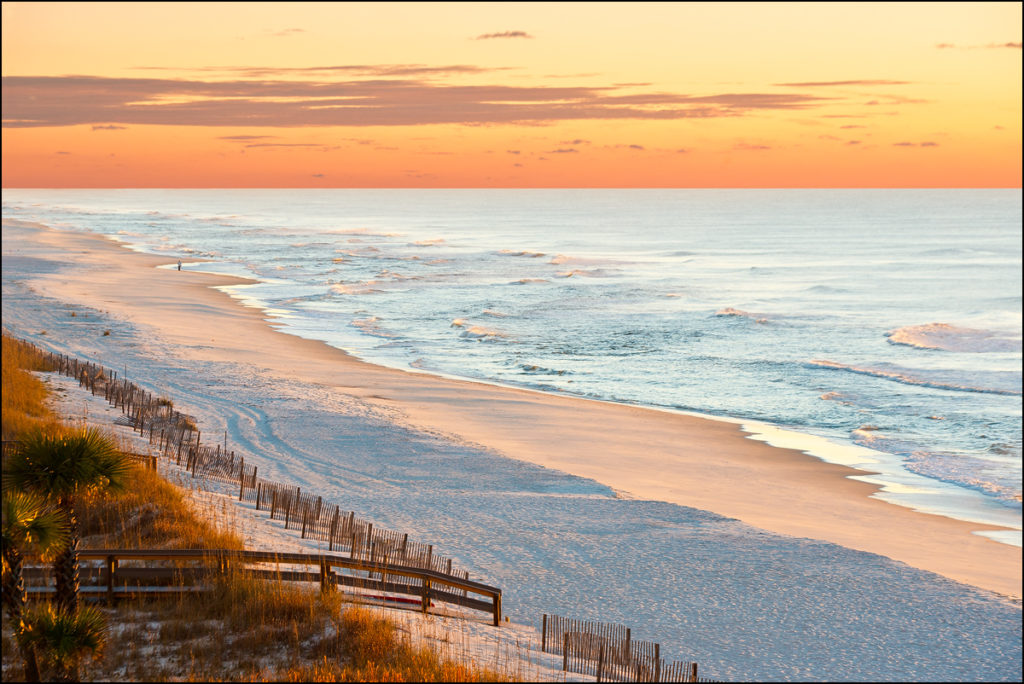
After three months of being ignored by Alabama Department of Transportation (ALDOT) Transportation Director John Cooper and ALDOT Chief Counsel William Patty, Alabama State Auditor Jim Zeigler is doubling down on his efforts of questioning the spending priorities of the ALDOT. On Thursday, Zeigler was forced to send a second letter to Cooper and Patty requesting further information about an $87 million state-funded bridge project in Baldwin County — which would be a second bridge to Orange Beach. But this time, Zeigler isn’t taking their silence as an answer; he’s given Cooper and Patty a deadline to respond: August 17. Zeigler again requested the following documents from the ALDOT: Copies of any and all studies that demonstrated a need for a bridge over the Intercoastal waterway Any and all documents that show a change in the need for the Intercoastal bridge since the determination in 2016 that the bridge was unnecessary Any and all analyses to support spending $30-$87 million in state funds in light of the pressing infrastructure needs throughout the state Any and all documents that resulted in the range of costs projected ($30 to $87 million) Documents that show cost overruns on current and recent ALDOT projects According to the court filing from the bridge company, they agreed to widen their bridge at no additional cost to Please provide any and all documents that address why the option of widening the original bridge is not being utilized. “Please let me know who will be working on this request or if there is a problem with getting the information requested by August 17,” Zeigler wrote in his letter. Zeigler sent his first letter requesting the information back in April. “I have more questions than I do answers about the proposed additional bridge. I hope to solve that with my specific requests for public records,” Zeigler explained in April. “With other pressing needs for infrastructure improvements, we need to make sure that this $30 to $87 million-dollar project is the best use of our limited funds.” Zeigler continued, “Could this money be better spent to finish ‘Bloody 98’ in Mobile County; to solve congestion on I-65, U.S. 280 and I-565; and to address dozens of local projects? The public needs to know, and I intend to figure it out.” Read Zeigler’s second letter below:
Bradley Byrne leads colleagues in opposition to Baldwin County immigration site
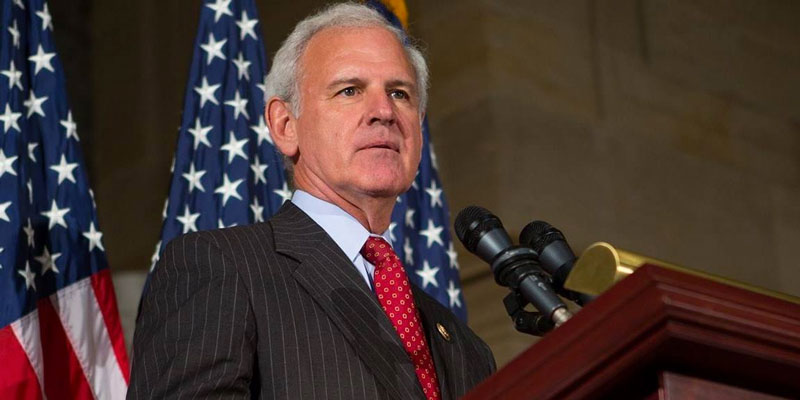
Alabama 1st District U.S. Rep. Bradley Byrne on Tuesday lead a group of colleagues from Alabama and Florida in sending a letter to urge the Department of Homeland Security (DHS) and the Department of Defense (DOD) to halt efforts to house illegal immigrants at two Navy outlying airfields in south Baldwin County, Alabama. In a letter to Secretary of Defense James Mattis and Secretary of Homeland Security Kirstjen Nielsen, the Members of Congress outlined why the lack of infrastructure at the airfields and the unique coastal environment make the sites completely unacceptable for housing. “I appreciate my Alabama and Florida colleagues joining me to express our serious concerns about any proposal to house illegal immigrants in Baldwin County,” Byrne said of the letter. “I am hopeful our concerns will be taken seriously and this flawed idea will be taken off the table, just like it was back in 2016.” Within the Alabama delegation, the letter was signed by all the Republican House Members: 4th District U.S. Rep. Robert Aderholt, 5th District U.S. Rep. Mo Brooks, 6th District U.S. Rep. Gary Palmer, 2nd District U.S. Rep. Martha Roby, and 3rd District U.S. Rep. Mike Rogers. The full text of the letter can also be found below. Dear Secretary Mattis and Secretary Nielson: We write to express strong opposition to the consideration of Naval Air Station Whiting Field’s Naval Outlying Field (NOLF) Silverhill in Silverhill, Alabama and NOLF Wolf in Orange Beach, Alabama as detention facilities for illegal immigrants detained from the U.S. southern border as these locations cannot adequately meet the needs of housing and sustaining migrants. While the Department of Homeland Security (DHS) has not formally asked the Department of Defense (DOD) for assistance to house migrants, it has come to our attention that DHS is working with DOD to develop a plan to house immigrants in temporary tent structures, including the possibility of using the above-mentioned sites. These locations are undeveloped military airfields. They lack even basic infrastructure, such as running water, housing, or restroom facilities, to provide even rudimentary needs for detained immigrants. Given this lack of infrastructure, individuals would be housed in tents and potentially exposed to disease carrying insects that are prevalent in the coastal environment. There are also serious natural hazards that should be taken into consideration at these sites. The Gulf Coast region is prone to severe weather including hurricanes, tornadoes, flash floods, thunder storms, severe heat waves, and high humidity. These natural hazards could present serious risks to those housed at these facilities, particularly to those housed in tent structures, as well as the personnel responsible for overseeing the facilities. Additionally, having to evacuate an additional 25,000 individuals from the airfields would place a further strain on what is already a complex hurricane evacuation system. This is not the first time a proposal has been made to use these airfields to house illegal immigrants. In 2016, the Obama Administration ultimately abandoned a similar effort to use these sites after intense pushback from Congress and local officials. During that discussion, based upon similar arguments, the House of Representatives passed an amendment to the annual Military Construction and Veterans Affairs Appropriations bill (H.R. 4974), which barred funds in the bill from being used to modify a military installation in the United States to provide temporary housing for unaccompanied alien children. H.R. 4974, with the amendment included, passed the House on May 19, 2016, by a bipartisan vote of 295 to 129. It is our sincere hope that the Trump Administration will come to the same conclusion that these airfields are not a legitimate option to house illegal immigrants. To be clear, we look forward to working with the Trump Administration to ensure that our nation’s immigration laws are fully enforced and to stem the flow of illegal immigrants at our nation’s southern border. As we work together, we hope you can assure us that the naval airfields in Baldwin County will not be used to house illegal immigrants.
Jim Zeigler asks DHS to cancel plan to house illegal detainees in Baldwin County
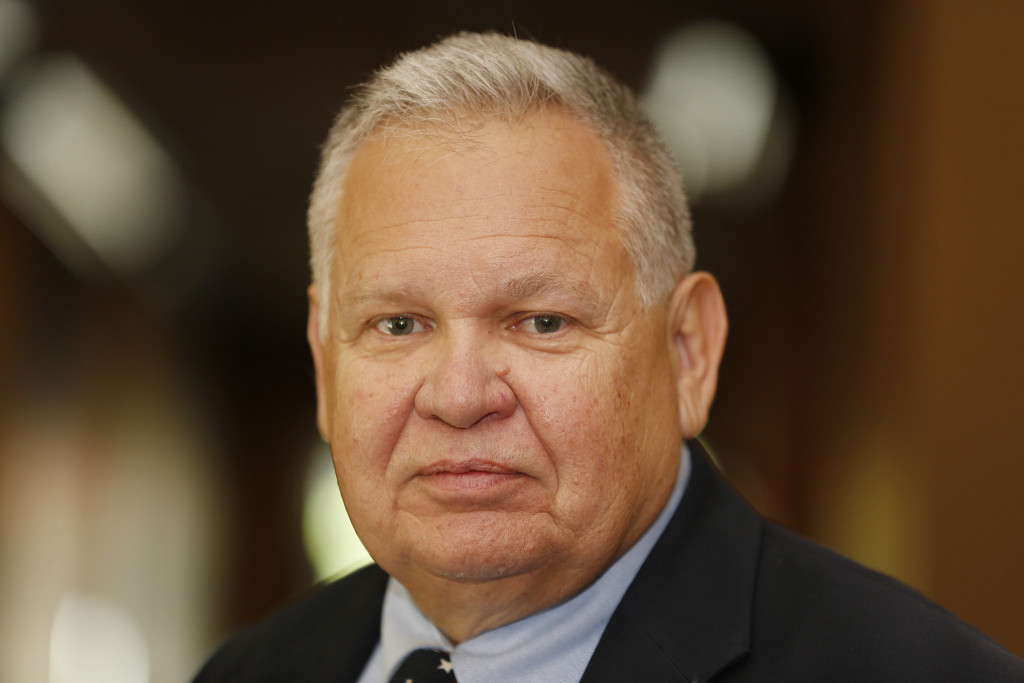
Time reported on Friday it had obtained an internal document that details the U.S. Navy’s plans to construct “temporary and austere” tent cities to house 25,000 illegal immigrants in the Yellowhammer State at two abandoned airfields — Navy Outlying Field Wolf in Orange Beach and Navy Outlying Field Silverhill — and Alabama State Auditor Jim Zeigler is trying to stop them. Zeigler, a resident of nearby Mobile County, sent a formal request to the U.S. Department of Homeland Security (DHS)Secretary Kirstjen Nielsen asking her to cancel the plans to construct two tent cities in Baldwin County. Zeigler says the plan is “terribly flawed.” He cited four problems with the plan: The area is a hurricane zone. “This area is a hurricane zone,” said Zeigler. “A tent city in a hurricane zone is dangerous for the detainees and the staff. It would be difficult and costly to quickly evacuate the detainees when a hurricane heads our way, which happens frequently. This site is totally inappropriate for the intended purpose.” High temps and humidity. Zeigler continued, “The area has high temperatures and humidity. There will be no air conditioning in a tent city. Other geographical areas are available without the heat and humidity. The site selection authority needs to be fired.” It’s near the state’s booming tourist industry. “The area is in or near Alabama’s booming tourist industry and highest revenue-generating area,” Zeigler explained. “Tourism and revenues would be adversely affected by these sites. Optional areas are available that are isolated and are not vital to tourism and revenue generation.” Security. “Security is a continuous problem with a sprawling tent city in a residential area,” Zeigler added. “Escapees can commit crimes in the nearby neighborhoods. Isolated areas are available that would not have this problem.”
Baldwin County placing police in all schools
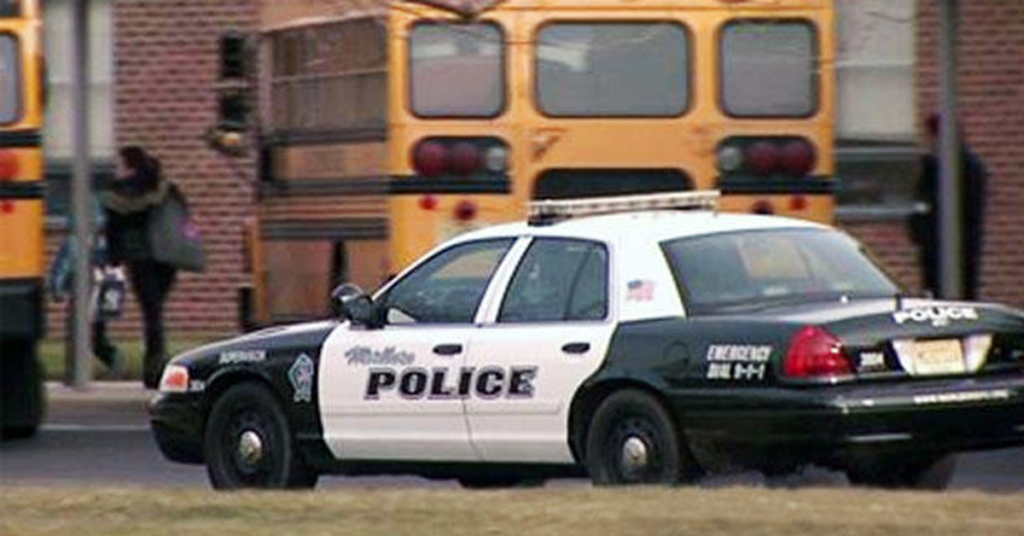
One of Alabama’s most populous counties has a plan to put armed police officers in each of its public schools. Officials in coastal Baldwin County say agencies are partnering to provide permanent school resource officers at each of its 46 campuses beginning this August. Currently, only some county schools have officers on duty constantly. Sheriff Huey “Hoss” Mack says Baldwin already has 30 school resource officers, meaning 16 more are needed. The sheriff’s office and city police departments will have to fill those positions. Officials haven’t provided details on how all the new jobs will be funded, but they say new taxes aren’t needed. School board members will consider the plan during a meeting Thursday. Baldwin County has more than 200,000 residents, and it’s located across Mobile Bay from Mobile. Republished with permission from the Associated Press.
True story of waking up to find ALDOT is secretly planning to build a fly-over bridge in your backyard
![[Photo Credit: Flickr user John Malone]](https://altoday.com/wp-content/uploads/2018/05/13258174014_555055548f_k-1024x683.jpg)
Baldwin County, Alabama is home to the picturesque cities of Gulf Shores and Orange Beach, among other charmingly quaint cities and towns. This uniquely beautiful part of the state annually draw tens of thousands of tourists and homeowners from around the nation to their beaches of crystal white sands. Local residents enjoy the southern charm of Alabama beaches, and food and entertainment amenities that feed a thriving tourist destination. For Mike Powell and his wife Lisa their move to Gulf Shores from Georgia should have allowed them the peaceful and quiet lifestyle they desired with the ability to stay active and enjoy their close knit community, but these days their lives are anything but quiet. When the couple first moved to Gulf Shores the sound from their front porch was near silence. For just over the last year, they would sit outside and enjoy the sounds of nature. Now, all they hear is the annoyingly distinct sound of traffic from the neighboring Foley Beach Expressway. Why the drastic change? Behind their house is a nearly 200 acre piece of undeveloped property with trees and land that previously served as a natural barrier for sound. Land that has now begun to be cleared with parts removed for what some locals are calling the #BridgeToNoWhere — a second fly-over bridge just shy of a mile and a half from the current Foley Beach Express Toll-Road. The existing and now proposed bridge would be built over the small canal leading from Gulf Shores to the beaches. At the time the bridge was first proposed in 2015-2016, the Powell‘s portion of neighborhood didn’t even exist. When state officials tabled the plan, it became a moot point to those in the area, something that would have been of no concern to future homebuyers like the Powell’s and the potential buyers of the next 100 houses that are currently waiting to be built. Alas in the dark of night or so it seems the plan was not only been resurrected, it has been brought back to life and fast-tracked with the new residents and potential residents about to be blindsided. Which is exactly what happened on Dec. 04, 2017. Powell was driving on the Foley Beach Express Way when he spotted the white Alabama Department of Transportation (ALDOT) truck coming from a new clearing in the undeveloped property described above. He pulled into the area and stopped the driver to ask what was going on. “We’re building a bridge,” the workers told him. When he mentioned that there’s another bridge down the road, they said “no, no, no. It’s going to be a new bridge.” Imagine Powell‘s surprise as he was told they were making way for that new bridge, practically in his backyard. More accurately, the bridge will be approximately 1/2 mile from his driveway and 1/4 from his neighbors. “We were going to have a City Council meeting about the schools that afternoon in front of the mayor and the staff, and I went and rushed and got these pictures developed and brought them before the board,” Powell said referring to a handful of photos he had from that day on his cell phone. “That’s when we were told by the mayor and the staff that they were planning a bridge.” It was the first time it was publicly talked about since 2016. There was no notice from the state or city officials. No hearings for public input, the work had already begun. A few weeks later Mike and Lisa met with Mark Ackerman, Public Works Director for the City of Gulf Shores, to get a better idea what the city was planning to build. “He personally took us in his vehicle and showed us where this [new bridge] was going to go down Foley Beach Expressway and come up back around County Road 4. But at that time he was saying there was just going to be this little bridge going up over our property about eight-nine feet high, because there were some wetlands there,” explained Powell. That made sense to the Powell‘s, so they left it alone, but they continued to hear more and more noises. Worried about the increasing sound levels, Powell reached out to ALDOT and in early January drove up to Mobile to meet with regional staffers Edwin Perry the regions Pre-Construction Engineer and Vincent Beebe the Assistant Region Pre-Construction Engineer, who are heading up the project. The pair took Powell to a conference room showing him map based design of the proposed bridge, looking down at them Powell noticed a significant problem – his neighborhood wasn’t even on the map. The property images the state had been using were from 2015. They hadn’t been updated when the project was revived towards the end of 2017. “When we got there to the Mobile office they had a table with the plans all out. Not a model, but a map, like a Google map,” explained Powell. “And I go, ‘where are our houses?’ Our part of the subdivision wasn’t there yet. So I asked them, ‘have you been to our subdivision?’ They responded, ‘no.’” Those working on the project in Mobile had failed to realize nearly 250 houses had been built in the area beside where they were planning to put their bridge. At that time no one overseeing the project had even been out to visit the site; it’s unclear if that has changed. “So I asked them how big this was going to be and what sort of volume of traffic they expected, and they couldn’t even answer that question,” Lisa weighed-in. “‘We’re not really sure’,” they told her. Since that time, Powell and his wife have had endless questions about the project set to destroy the peaceful life they once enjoyed. The problem? Answers have been hard to come by and when they can get them, they keep changing. First, they were told the bridge would be an evacuation route (this has since changed and the purpose has been designated as a way to ease Highway 59 traffic congestion). During

